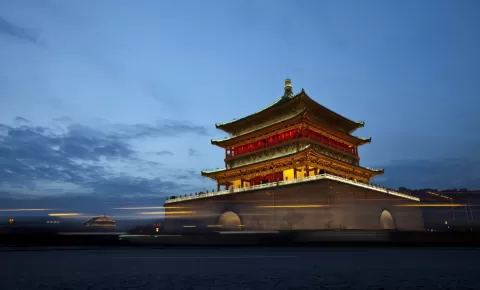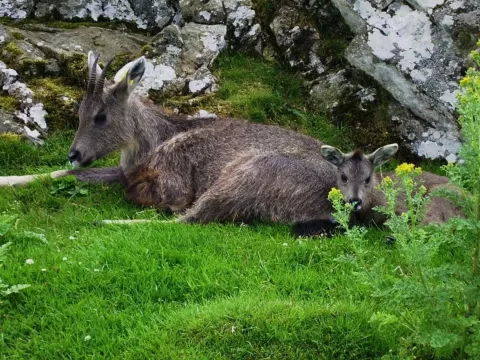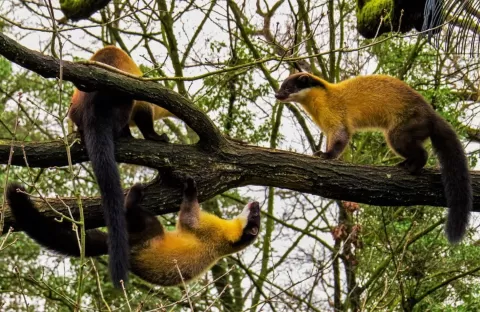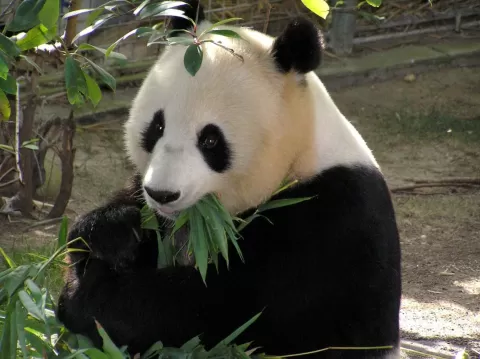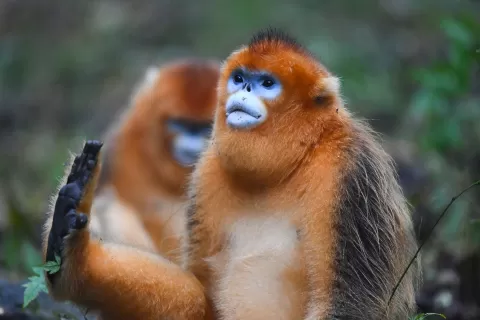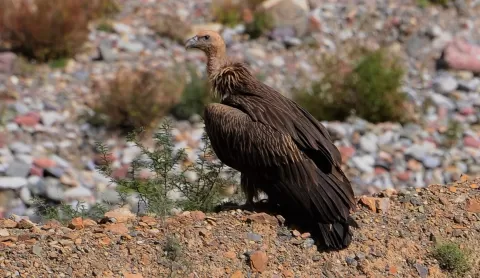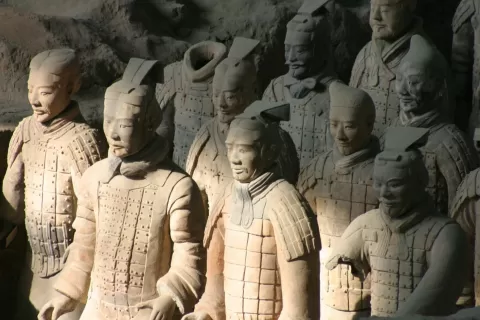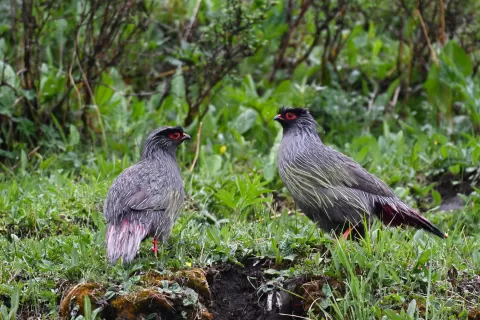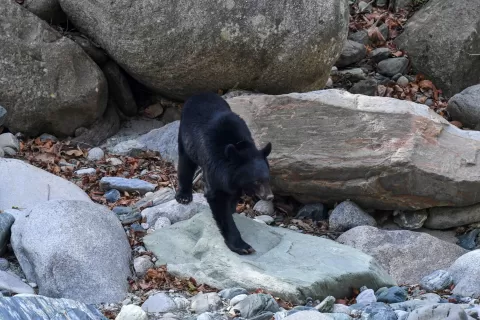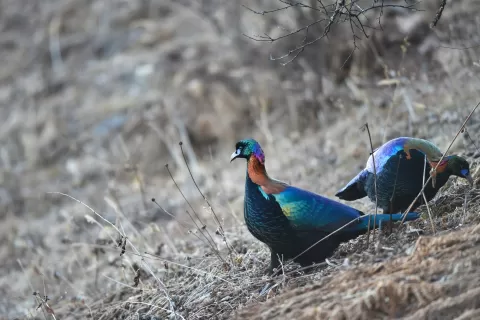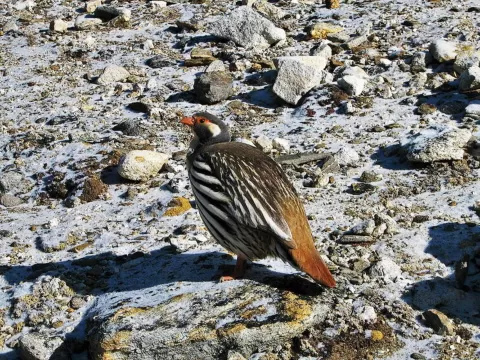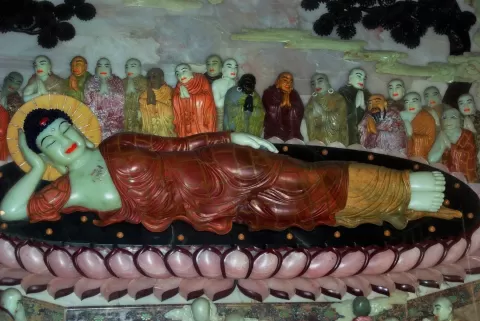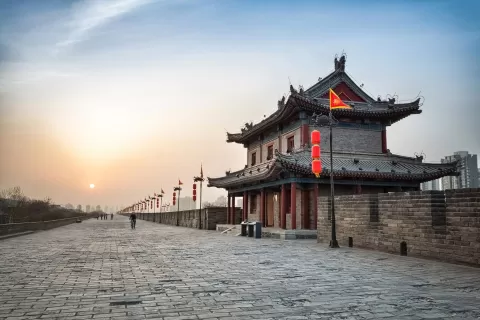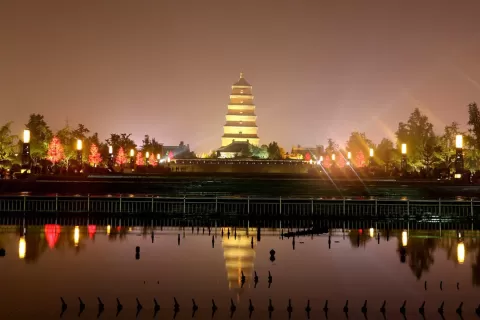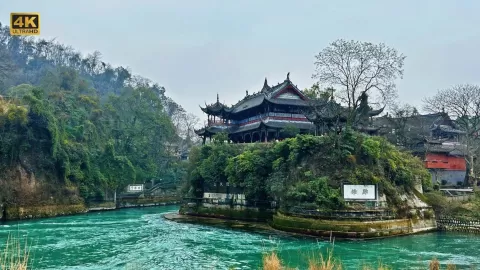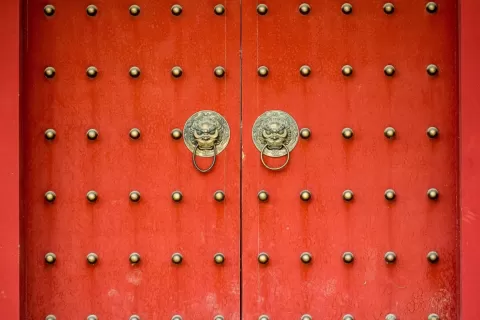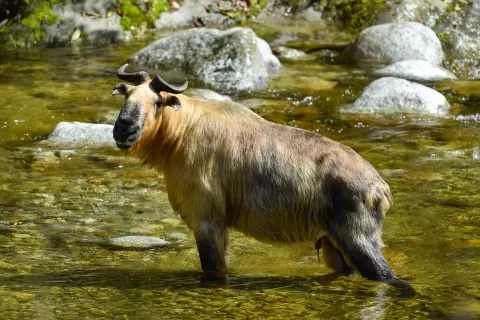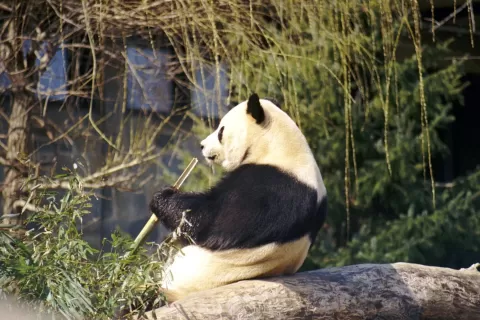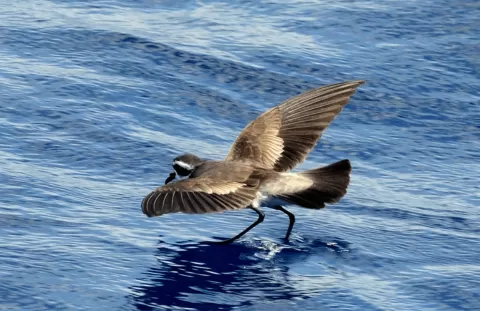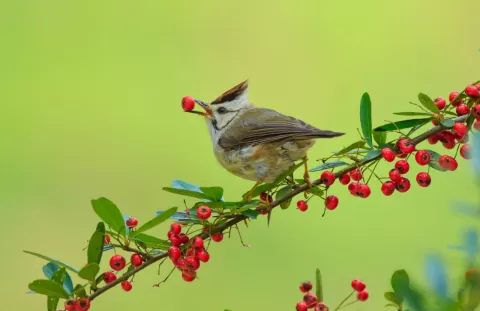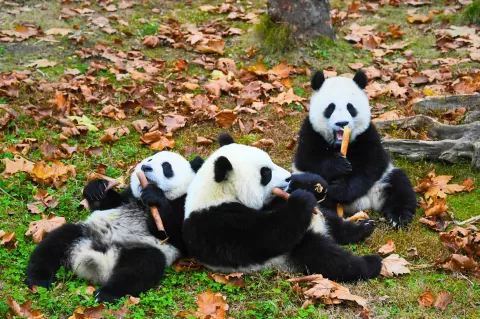Wildlife and Culture Tour in China - A Unique Eco Travel Experience
Wildlife and Culture Tour in China - A Unique Eco Travel Experience
10 Days | #268-IN |
Booking Open
Xian |
Terra-Cotta Warriors-Ancient City Wall-Muslim Quarter |
Xian-Yangxian-Pingwu |
Tangjiahe NNR |
Wolong |
Mt. Balang |
Chengdu |
Description
This 10-day tour immerses you in the vibrant wildlife and rich cultural heritage of China — the world’s fourth-largest country. Your journey begins in the ancient city of Xi’an, renowned worldwide for the awe-inspiring Terracotta Warriors. Beyond its historic significance, Xi’an is also a bustling hub for shopping, offering antiques, traditional crafts, and clothing.
Next, you’ll travel to Yangxian, one of China’s premier birding destinations and home to the endangered Crested Ibis. From there, we venture to Tangjiahe, a serene sanctuary where Giant Pandas and diverse wildlife live undisturbed amidst pristine forests.
The adventure continues with a scenic drive to Wolong, known as the global distribution center for pheasants, offering spectacular birdwatching opportunities. Finally, you’ll explore Chengdu — a tourist paradise boasting a stunning range of landscapes, from snow-capped mountains and lush green plains to rugged hills, promising unforgettable natural and cultural experiences.
Detail Itinerary
- Day 01: Arrival Xian
Meals: Dinner
Accommodation: Campanile Hotel (Xi'an Bell Tower) or similarUpon arrival, you will be warmly received at the airport by your private birding guide or driver and transferred directly to your hotel. After settling in, enjoy your first taste of Shaanxi cuisine, known for its bold flavors and unique regional specialties that reflect the area’s rich cultural heritage.
Overnight stay at the hotel.
- Day 02: Terra-Cotta Warriors-Ancient city wall-Muslim Quarter
Meals: Breakfast, Lunch & Dinner
Accommodation: Campanile Hotel (Xi'an Bell Tower) or similarDepart early this morning to visit the iconic Terracotta Warriors, often hailed as the eighth wonder of the world. This awe-inspiring army of life-sized soldiers was built to guard the tomb of Qin Shi Huang, the first emperor to unify ancient China. Recognized as a UNESCO World Heritage Site, it stands as one of the most extraordinary archaeological discoveries in history. After taking your time to admire the vast ranks of warriors, we’ll continue in the afternoon to the Ancient City Wall of Xi’an—one of the oldest and best-preserved city walls in China, offering panoramic views of the old town.
In the evening, enjoy a local dinner near your hotel. For those interested, an optional leisurely stroll through the vibrant Muslim Quarter can be arranged—an atmospheric area known for its lively street food scene, traditional architecture, and rich cultural blend.
Terracotta Warriors: This is the one attraction that has truly captured the imagination of visitors from around the world. China’s first emperor, Qin Shi Huang, commissioned the Terracotta Army—an immense collection of life-sized clay warriors, horses, and chariots—to protect him in the afterlife. Completed in 210 BC by around 720,000 workers, each figure is uniquely detailed with distinct facial features, showcasing incredible craftsmanship. Over 2,200 years later, the army remains remarkably well-preserved, standing as a remarkable testament to ancient engineering and artistic skill.
Ancient City Wall: The remarkably well-preserved Xi’an City Wall, stretching nearly 12 kilometers, has stood for over 600 years as a historic landmark and a unique way to explore the city. Built in traditional Ming Dynasty style, visitors can walk or cycle along its broad ramparts, enjoying panoramic views of both ancient and modern Xi’an. Locals say that if you listen closely, you can almost hear echoes of ancient battles and the cries of soldiers—whispers from a time when the city was a formidable fortress, reflecting Xi’an’s glorious and turbulent past.
Muslim Quarter: Xi’an’s Muslim Quarter reflects the city’s rich Islamic heritage, home to a thriving Muslim community for centuries. Stretching north from the Drum Tower, this lively area features narrow alleys filled with halal butcher shops, historic mosques, vibrant street food stalls, and local craft shops. The quarter blends traditional Chinese architecture with Islamic influences, making it a unique cultural and culinary highlight within the ancient city walls.
- Day 03: Xian to Pingwu via Yangxian
Meals: Breakfast, Lunch & Dinner
Accommodation: Jiuzhoujindu Hotel or similarAfter breakfast in the hotel, we will catch a 1-hour bullet train to Yangxian where we will spend a couple of hours birding. Yangxian is located south of the Qingling mountain range, which is a natural barrier for north-south species movement. Yangxian is a unique birding spot where we can see the endemic and endangered Crested Ibis, which was once considered an extinct species until 7 of them were found in Yangxian in the early 1980s.
The population has gradually grown to over 3000 now. Other interesting species we can expect here include the Peregrine Falcon, White-breasted Waterhen, Black-capped Kingfisher, Great Egret, Red-throated Pipit, Black Drongo, etc. After birding in Yangxian, we will catch another bullet train to Guangyuan (about 1 hour) and have a 2.5hours drive to Pingwu.
Overnight accommodation will provide a comfortable setting to reflect on the day’s incredible wildlife encounters.
- Day 04: Pingwu to Tangjiahe via Baoen Temple
Meals: Breakfast, Lunch & Dinner
Accommodation: Tangjiahe HotelThis morning we will depart from the hotel in Pingwu and drive to another reserve to search for a kind of unique animals called Golden Snub-nosed Monkey. Golden Snub-nosed Monkey has a rich golden brown to golden red fur with a black and golden patch on the back. In Sichuan province, the Minshan Mountain range is home to the largest population of these beautiful and lovely primates. They usually live in high mountainous, deciduous broadleaved and coniferous forests and share the same habitats with Giant Pandas. We will take you to a place where you have the highest chance to see those shy but photogenic animals endemic to China.
In the afternoon, we will visit Bao’en Temple. Bao'en Temple is known as "The Forbidden City hidden in mountains". It is one of the largest and the best-preserved ancient architectural complexes of the Ming Dynasty (about 600-year-old) in Sichuan province. It was said the architecture was first built by Wang Xi, a local tribe head in Pingwu as his palace, by imitating the royal Forbidden City in Beijing after paying his visit to Emperor. In ancient China, however, this was regarded as the most serious violation of the law. When Wang got to know that the Emperor was infuriated by his action and the investigation officials were already on the way. He immediately turned this architecture into a temple to pray for the longevity of the Emperor as a way to express his thanks to all the great kindness he has received from the Emperor. That is why this building is called "Bao'en Temple". " Bao'en", in Chinese, literally means to "requite royal kindness". After visiting Bao'en Temple, we will drive about 1h to Tangjiahe NNR.
Overnight stay at the hotel.
- Day 05: Tangjiahe
Meals: Breakfast, Lunch & Dinner
Accommodation: Tangjiahe Ground HotelDuring our stay in a hotel inside the Panda Habitat, our group will be able to explore Giant Panda habitats with great convenience. This scenic reserve is one of the first reserves set up in China to protect wildlife and is one of the most successful reserves to achieve this goal. It is home to a great variety of species of wildlife including plants, fishes, insects, and amphibians living under the umbrella of Giant Panda protection.
We will spend two days exploring different parts of the reserve in search of mammals, birds, and fishes. The animal species we may come across based on our knowledge from past trips include Takin, Golden Snub-nosed Monkey, Asiatic Black Bear, Tibetan Macaque, Golden Pheasant, Wild Boar, Chinese Goral, Reeve's Muntjac, Chinese Serow, Masked Civet, Eurasian Otter, Tufted Deer, Yellow-throated Marten, and Rhesus Macaque. At the end of the day, we can have a night walk around the hotel to search for some nocturnal animals such as Civet Cat and Leopard Cat.
The reserve is also a hotspot for birdwatchers, with chances to spot the dazzling Golden Pheasant and a rich array of forest bird species. For the fortunate, there is a possibility of glimpsing the mysterious and scarce Tawny Fish Owl, a truly fascinating nocturnal predator.
Overnight stay at the hotel.
- Day 06: Tangjiahe to Dujiangyan via Qingxi village
Meals: Breakfast, Lunch & Dinner
Accommodation: Balan International Hotel or similarSpend the whole morning in the park and drive to Qingxi village for lunch. After lunch, we will drive to Dujiangyan via Qingxi Ancient Village. Qingxi Ancient Village served as an important strategic point in defending Sichuan and trade post between Muslims and Han Chinese in history. With a history of more than 1700 years, Qingxi used to be the county seat of Qingchuan County with a city wall going around the village. The existing buildings inside the Qingxi Village are Ming and Qing dynasties' style. We will spend about 1 hour exploring this quiet ancient town and feel the harmonious coexistence of Muslims and Han Chinese under the same roof of traditional Chinese architecture.
After that we will drive 3.5 hours to Dujiangyan. Arrive Dujiangyan and check-in at the hotel for an overnight stay.
- Day 07: Dujiangyan to Wolong via Shenshupin Panda Base
Meals: Breakfast, Lunch & Dinner
Accommodation: Shoumoren Hotel or similarIn the morning, we will depart from our hotel to venture into the heart of the panda’s natural habitat. We will visit the Wolong Panda Base of CCRCGP (China Conservation and Research Center for Giant Pandas) with the option of participating in a Panda Volunteer Program. This base gives guests a perfect opportunity to watch these animals quietly against the backdrop of their natural habitat. In the afternoon, we will drive to Balang Mountain to see the beautiful scenery or hike in Dengshengou Valley based on the weather conditions.
After the Panda Base. We will spend the late afternoon to search for the low-elevation area of Balang Mountain for Large Hawk Cuckoo, Himalayan Cuckoo, Eurasian Nutcracker, Green-backed Tit, Yellow-streaked Warbler, Buff-throated Warbler, Chinese Leaf Warbler, Sichuan Leaf Warbler, Martens's Warbler, Brownish-flanked Bush Warbler, White-collared Yuhina, Chinese Babax, Chestnut Thrush, Verditer Flycatcher, Daurian Redstart, Slaty Bunting, Yellow-throated Bunting, etc. Golden Pheasant's call normally can be heard here, but it normally hides in the bush, we may see it with luck.
Overnight stay at the hotel.
- Day 08: Mt. Balang
Meals: Breakfast, Lunch & Dinner
Accommodation: Shoumoren Hotel or similarWe’ll start early this morning with a boxed lunch in hand to maximize our birding opportunities. Mt. Balang is renowned as one of China’s most productive sites for pheasant species. Here, you’ll have the chance to see an incredible variety of birds including Snow Partridge, Tibetan Snowcock, Blood Pheasant, White-eared Pheasant, Chinese Monal, and Chestnut-throated Partridge (also known as Verreaux’s Monal-Partridge).
In addition to these spectacular pheasants, the area is home to a stunning array of other birds such as Himalayan Vulture, Lammergeier, Red-billed and Yellow-billed Choughs, Firethroat, Grandala, and several species of rosefinches — Chinese White-browed, Pink-rumped, Beautiful, Dark-breasted, Common, and Streaked. You may also spot Plan Mountain Finch, Brand’s Mountain Finch, White-winged Grosbeak, Giant and Barred Laughingthrushes, Chinese Fulvetta, White-browed Fulvetta, Himalayan Bluetail, White-throated Redstart, and Blue-fronted Redstart.
This extraordinary diversity makes Mt. Balang is a truly rewarding destination for bird lovers. Overnight stay at the hotel.
- Day 09: Mt. Balang to Chengdu
Meals: Breakfast, Lunch & Dinner
Accommodation: HL Rezen Hotel Chengdu or similarEarly in the morning, we’ll drive to Balang Mountain for another chance to spot our target species. In the late afternoon, we’ll embark on a scenic 3-hour drive to Chengdu. Upon arrival, check in to your hotel and then take some time to explore the vibrant city of Chengdu, immersing yourself in its unique culture and lively atmosphere.
- Day 10: Departure
Meals: Breakfast & Lunch
Accommodation: NoneFollowing a lovely breakfast at the hotel, you will be transferred to the airport to depart from Chengdu. This will conclude the services for this scheduled itinerary with happy and memorable memories. Tour Ends
Highlights
- Discover the ancient wonders of Xi’an, including the world-famous Terracotta Warriors, the historic City Wall, and the vibrant Muslim Quarter.
- Journey through scenic landscapes and remote regions, experiencing traditional rural life and diverse ecosystems from Xi’an to Yangxian and Tangjiahe.
- Explore Tangjiahe National Nature Reserve, a biodiversity hotspot known for its rich wildlife, including rare and endemic species.
- Visit Wolong, home to the renowned Giant Panda conservation and research center, where you can observe these iconic animals up close.
- Trek Mt. Balang, enjoying spectacular mountain scenery and opportunities for birdwatching and nature encounters.
- Conclude the journey in Wolong with a visit to the natural Panda Base, supporting ongoing efforts to protect China’s beloved giant pandas.
Service Included
- A nice private van, including the cost of fuel and tolls throughout the whole trip
- A private bus inside Tangjiahe NNR
- All meals at local popular restaurants are abbreviated to BLD in the itinerary
- Two people occupying one twin-bed room on a sharing basis at 3-star standard hotels in the city and local best guesthouses in the mountainous area. If the client prefers to use a private room or someone fails to have a roommate, he would need to pay the Single supplement
- Service of all logistic support
- China Domestic Travel Insurance
- Bottled water and snacks
- Service of an English-speaking bird guide for the whole trip.
- A local ranger in Tangjiahe NNR
Service Not Included
- Optional tours, laundry service, beverages, personal and incidental expenses, tips, phone calls, alcohol, camera fee, etc.
- Extra charges due to a change of itinerary from client's side or factors beyond the control of Alpine Birding, such as natural disaster and governmental policy change
- International & Domestic air fare, visa, insurance,and airport tax.
- Any program not listed in the itinerary
